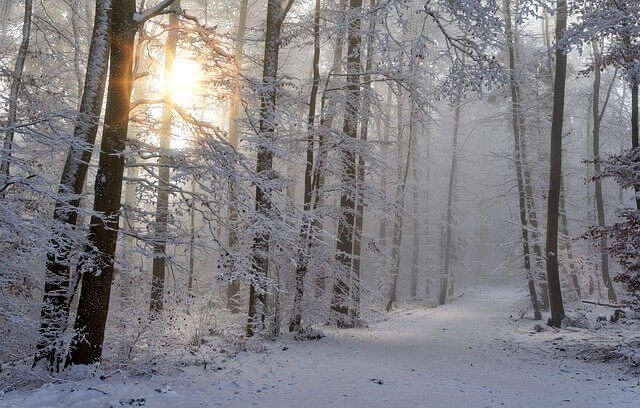The science of snow
While we ended up with more snow than we know what to do with, this winter started slowly. If you’ve been following our forest management project at the Andrews Community Forest in Richmond, you’ll know that we struggled with warm weather and soils that didn’t freeze until far later than usual.

For loggers, the wintertime is like the summertime for farmers, or the spring for sugar makers—a short period of time when they make a disproportionate amount of their yearly income. As forest managers, this is when some of our best work gets done—when we can manage our forests to be more diverse, resilient and complex while produce local renewable resources (wood) with minimal impacts to soils. When, like this year, we have warm, wet weather into January, it challenges our ability to do this important work.
Forest management is certainly not the only activity that benefits from colder, snowier winters. Most of us in Vermont rely on skiing, snowboarding, skating, sledding and other winter spots to combat the winter blues. When we can’t do these things, it diminishes both our quality of life (fun) and the jobs and economic activity supported by these winter recreational activities.
There is an overwhelming body of research showing that our winters are becoming milder, that our snowpack is decreasing, and that these trends will continue as our climate changes. While this is certainly an economic problem and a quality-of-life problem, it also is having a number of negative effects on forest ecology.
Research by Dr. Pamela Templer and others has illustrated the many ways that having less snow harms forests. For trees, one main issue is the loss of the insulation that snow provides. This causes freezing to penetrate more deeply into the soil, damaging tree roots and diminishing trees’ ability to take up nutrients and forests’ ability to store carbon. It is also linked to substantially slower growth in a number of tree species—most notably sugar maple. The melting snowpack also helps rehydrate trees as they emerge from dormancy in the spring.
Decreasing snow depth also impacts a variety of our native critters. The subnivean zone is the habitat within the snowpack, where small mammals like mice, voles, shrews and ermine live out the winter, protected from extreme winter temperatures. Small mammals support many important functions in forest ecology, including (but certainly not limited to) feeding animals like owls, foxes and bobcats.
Lower snow depths are not a problem for all wildlife; white-tailed deer, whose populations are limited by winter severity, benefit from warmer winters with less snow. Unfortunately, as most other New England states have already realized, deer overpopulations are a massive biodiversity threat. By selectively browsing young trees and plants, they lower diversity, encouraging non-native invasive plants.
Aside from addressing the root causes of climate change (which stretches far outside the forestry realm), what can we do? From a quantitative perspective, we can manage our forests to sequester and store lots of carbon. By far the most important thing we can do in this respect is to keep forests as forests, protecting them from conversion, development and fragmentation. We can also manage forests for carbon sequestration and storage by leaving some big trees in the woods, leaving lots of dead wood on the forest floor, avoiding large-scale disturbances and leaving some areas unmanaged.
We also need to protect our forests’ ability to be healthy, to provide amazing wildlife habitat for species under tremendous stress, and to sequester and store carbon by encouraging resilient, adaptive forests: forests that are able to stay healthy amidst the many stressors of a changing climate. We can do this actively, using forest management to help our relatively young, simple forests become more diverse and complex, and addressing threats to forest health and diversity like deer overpopulation and invasive exotic plants.
In a broader sense, we can mitigate climate change by thinking critically about where our resources come from. Forest management can’t solve all our problems, but done well, wood is an example of a resource we can be proud of, one that can be produced while encouraging the health and resilience of our ecosystems. Using local renewable resources rather than non-local, non-renewables is a powerful way to take charge of our climate impacts, lowering our effects on peoples, critters and ecosystems across the globe—and protecting our beautiful snow.
Ethan Tapper is the Chittenden County Forester. He can be reached via email or at (802) 585-9099. Stay tuned to what Ethan’s up to.

